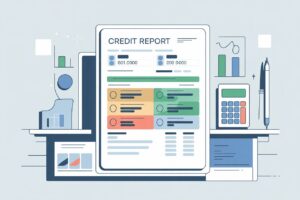If you have federal student loans, you actually have numerous options from which to choose in order to repay those college debts. All of the payment plans generally range from as few as 10 years to as long as 25 years. The exact term and the repayment plan options that are granted to you depend on the type of loan you have.
Maybe you’ve got loans in the FFEL program, maybe through a direct loan program, or maybe you had an unsubsidized loan or a PLUS loan. All of this plays into the type of repayment plan that’s going to be available and best for you.
Here’s a quick outline of the variety of options from which you can choose.
Standard Loan Repayment Plan
First off, you can stick with the standard loan repayment plan. This is the one that everybody gets funneled into automatically.
It’s a 10 year repayment plan. You pay a fixed amount of money every single month until your loans are paid in full. Those loan payment amounts, though, must be at least $50 a month.
Graduated Repayment Plan
With a graduated repayment plan, you start off at a lower monthly payment and then it increases, typically about every two years.
You still have to pay off your loan in 10 years, but the way it works is that your payments get a little bit bigger over time based on the assumption that maybe as you go through life, you’ll later get a better job, and have a higher income in order to support those payments.
At a minimum, no matter what happens, though, your payments have to cover at least the interest that accumulates on your loans between payments.
The graduated loan repayment is essentially a way to help recent college grads who typically start out with lower incomes, but over time, they do expect their income to rise in the future.
Extended Repayment Plan
A third repayment option is the extended repayment plan. If you are an FFEL borrower, you could qualify for this plan if you have had no outstanding balance on an FFEL program loan as of October 7th, 1998.
With these loans, essentially, under the extended repayment plan, you pay off your loans in 25 years. You can make fixed or graduated monthly payments under this plan.
But because you’re extending the term here, stretching out what was previously a 10‑year loan repayment cycle to as much as 25 years, you should know that you’ll ultimately wind up paying more for this kind of loan repayment plan.
You’re going to eventually have to shell out extra bucks for all the interest that’s accumulating over this longer repayment term.
Income Repayment Options
The next three income repayment options offered to those with federal loans really do deal with your income. There’s the income‑based repayment plan, there’s the income‑sensitive repayment plan, and then there’s the income‑contingent payment plan.
Income Based Repayment (IBR)
Income‑based repayment is growing in popularity, mainly because there’s a cap on the amount that you have to pay in terms of your student loans. It’s based on your income and your family size.
The good thing about the income‑based repayment plan is that if you work in public service ‑‑ these loans can last as short as 10 years ‑‑ whatever remaining balance still exists after 10 years can get canceled.
Let’s say you don’t work in public service. If you stick to the traditional income based repayment plan, also called IBR, then your repayment schedule will last as long as 25 years, and then ultimately you’ll pay off your loan.
The idea to remember, though, is that with income‑based repayment, your loans can be gotten rid of as quickly as 10 years or at a maximum of 25 years.
Income Sensitive Repayment
With income‑sensitive repayment plans, these apply only to FFEL program loans. With an income‑sensitive plan, your loan is tied to whatever your annual income is for the year.
Whenever your income goes up, your payments go up. If your income drops or decreases, your payments also fall. The maximum payment repayment period here is 10 years. This is another good way to quickly get rid of those student loans.
Income Contingent Repayment
Finally, the income contingent repayment plan is for those who have either direct PLUS loans, graduate student loans for graduate and professional students, as well as people with direct subsidized and unsubsidized loans ‑‑ the Stafford Loan, for instance.
Your monthly payments on these kind of loans is, again, tied to your income. They also take into account your spouse’s income, if you’ve already tied the knot. Your family size is taken into consideration, so if you have kids, then you’ll have to shell out fewer dollars in the income‑contingent repayment plan.
Essentially, under this plan, you have as long as 25 years to repay your student loans, and then the unpaid portion, if there’s anything left over after two and a half decades, gets forgiven.
You may have to pay income tax if there’s an amount that’s forgiven. You’ll have to talk to a tax specialist about that. Of course, the government could also change the law between now and the next 25 years.
This, in a nutshell, describes the variety of loan repayment options that are available to you.
In total, there are six different repayment plans ‑‑ the standard repayment plan, the graduated repayment plan, the extended repayment plan, the income‑based repayment plan, the income‑sensitive repayment plan, and the income‑contingent repayment plan.
Certainly, one of these will be right for you to help you avoid going into delinquency or default on your federal student loans.










